INTERNACIONAL
White smoke: Boehner’s encounter with Pope Francis changed Congress forever
An audience with the pope is a day to remember.
But only on Capitol Hill would the day after the pope visited become even more memorable.
The late Pope Francis came to Washington, D.C., to speak to a Joint Meeting of Congress on Sept. 24, 2015. He wasn’t the first pontiff to descend on Capitol Hill. But the pope is a head of state, ruling the Vatican City and the Holy See. As such, Francis became the first pope to speak to a Joint Meeting of Congress in the House chamber.
DEMOCRATS’ IDENTITY CRISIS: YOUTH REVOLT ROCKS PARTY AFTER TRUMP COMBACK
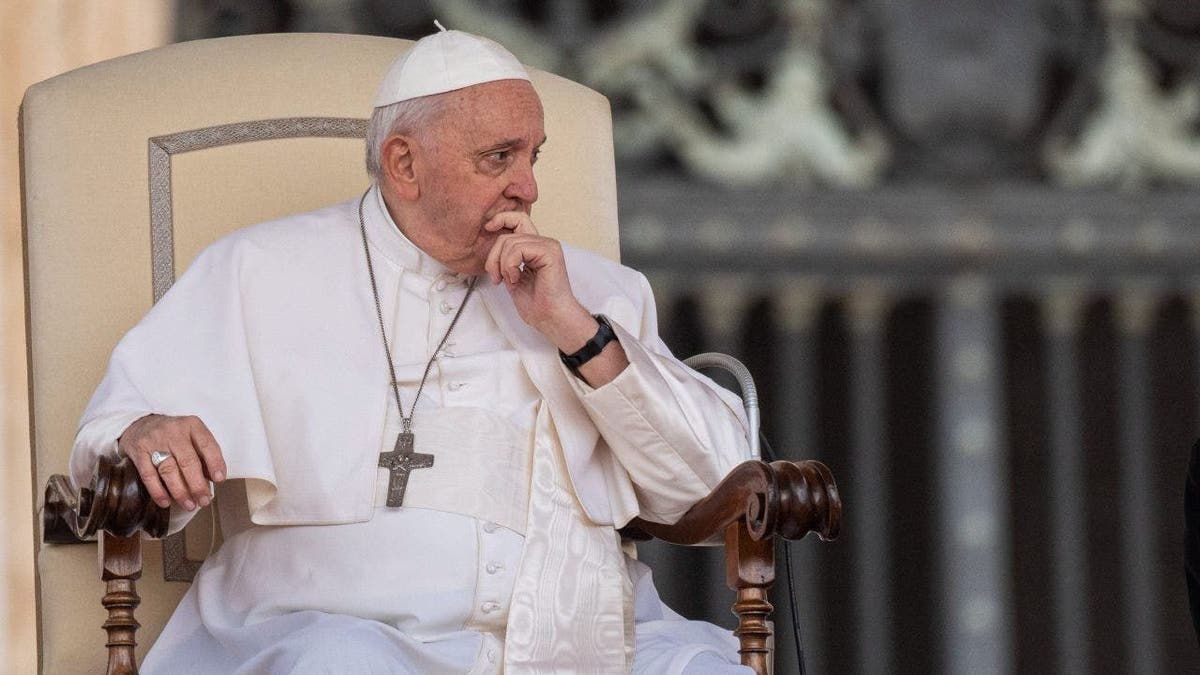
Pope Francis leads his traditional Wednesday General Audience at St. Peter’s Square in Vatican City on March 8, 2023. (Stefano Costantino/SOPA Images/LightRocket via Getty Images)
Lawmakers showered the Holy Father with applause and two standing ovations during his address. Two Catholics were perched behind Pope Francis on the dais: then Vice President Joe Biden and former House Speaker John Boehner, R-Ohio. As vice president, Biden served as President of the Senate. As speaker, Boehner was the Constitutional officer for the legislative branch.
Boehner blotted his eyes with a handkerchief several times during the 3,400-word speech.
Pope Francis implored lawmakers to treat each other — and their constituents — with dignity.
«We need to avoid a common temptation nowadays. To discard whatever proves troublesome. Let us remember the Golden Rule: ‘Do unto others as you would have them do unto you,’» he said.
GOP PUSH TO MAKE TRUMP’S 2017 TAX CUTS PERMANENT, SAY GOING BACK WOULD BE A ‘DRAMATIC’ CHANGE FOR MANY
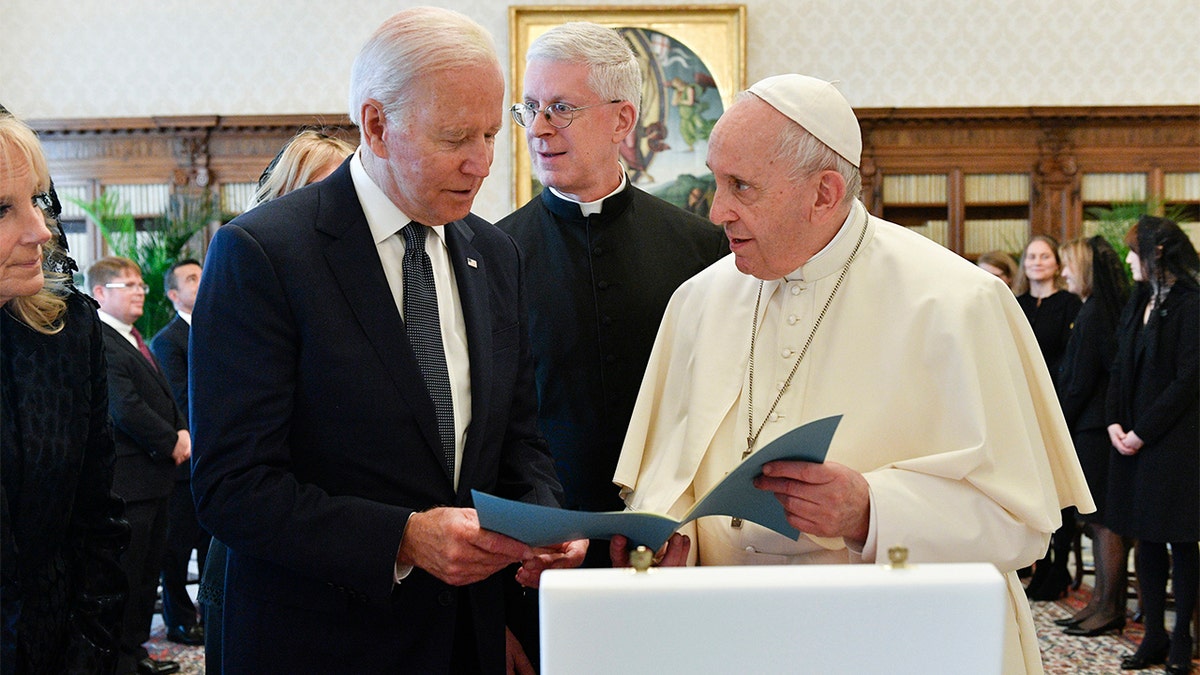
President Joe Biden, left, exchanges gifts with Pope Francis as they meet at the Vatican on Oct. 29, 2021. (Vatican Media via AP)
One thing I remember about the Pope’s visit was the choreography. Congressional workers affixed small, green strips of tape to the Capitol’s marble floors. Names were emblazoned on the tape in black Magic Marker at different points around the complex. «McCarthy» or «Pelosi» or «McConnell.» All part of the political — and papal — stagecraft.
The tape dictated where key political leaders would stand as they escorted Pope Francis into the House chamber or in front of the statue of Junipero Serra in Statuary Hall.
A duct-taped «X» marked the floor in front of Serra. The pope canonized Serra the day before he visited the Capitol at the Basilica of the National Shrine of the Immaculate Conception in Washington. Serra became the first American to become a saint on U.S. soil. Pope Francis blessed the statue of Serra. The statue depicts the saint hoisting a cross in his right hand, looking skyward toward the heavens.
Someone taped a green arrow over the black and white tiles of Statuary Hall, pointing toward the Speaker’s Office.
That signaled the pope’s next stop on Capitol Hill.
FOX NEWS TO AIR LIVE COVERAGE OF POPE FRANCIS’ FUNERAL ON SATURDAY
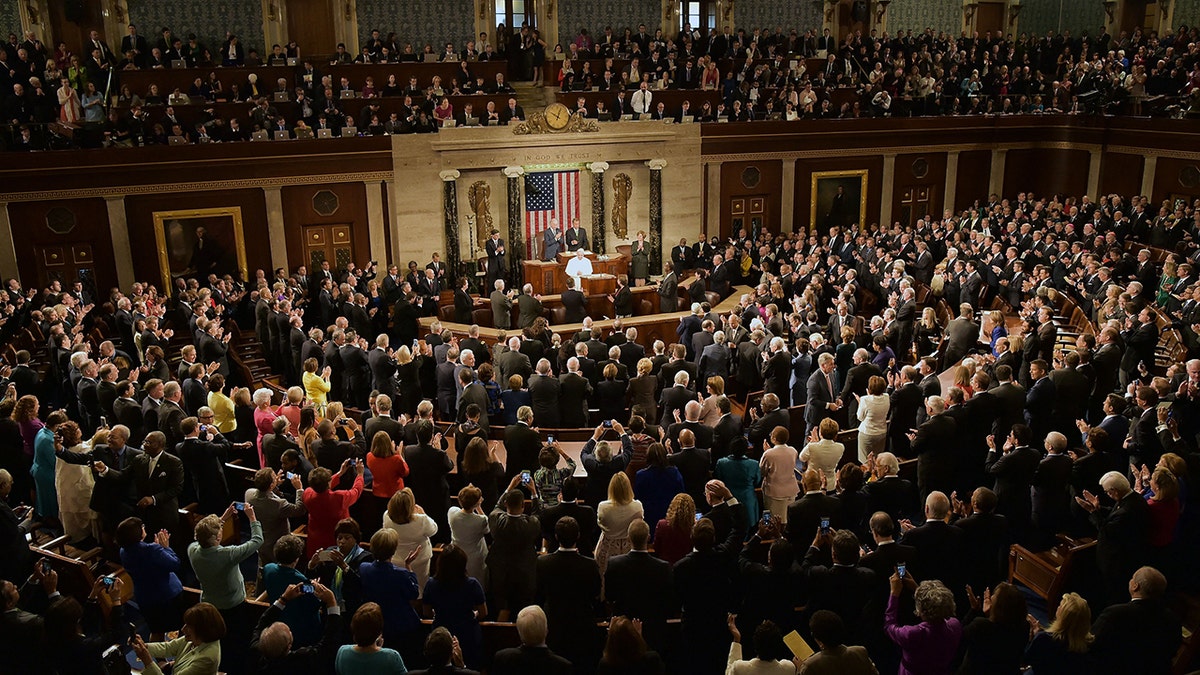
Pope Francis addresses the joint session of Congress in Washington, D.C., on Sept. 24, 2015. (Vincenzo Pinto/AFP via Getty Images)
Pope Francis and the entourage then walked toward Boehner’s office and onto the Speaker’s Balcony overlooking the West Front of the Capitol and down the National Mall toward the Washington Monument.
A throng assembled on the Capitol grounds.
«Buenos dias,» said the Pope, greeting the crowd like he would from the «Pope’s Window» at the Apostolic Palace at the Vatican on a Sunday. «I am grateful for your presence.»
He then blessed the pilgrims on the ground below.
«Papa! Papa!» the crowd chanted.
When the pope first arrived at the Capitol, he met with Boehner in the Speaker’s ceremonial office just off the House floor.
Boehner paced nervously awaiting Pope Francis on the 19th century Minton Tiles, which adorn the office.
«He’s on Boehner time,» said the former speaker. «Which is on time.»
Boehner wore his signature Kelly green tie for the occasion — a vintage piece of Boehner apparel, which dates back to when he served in the Ohio state legislature and first ran for Congress in 1990. When Pope Francis arrived, he told the former speaker the tie bore a «color of hope.»
A few days later, Boehner choked up as he relayed a story about what Pope Francis said to him when they were about to exit the Capitol.
«We found ourselves alone,» said Boehner of himself and Francis.
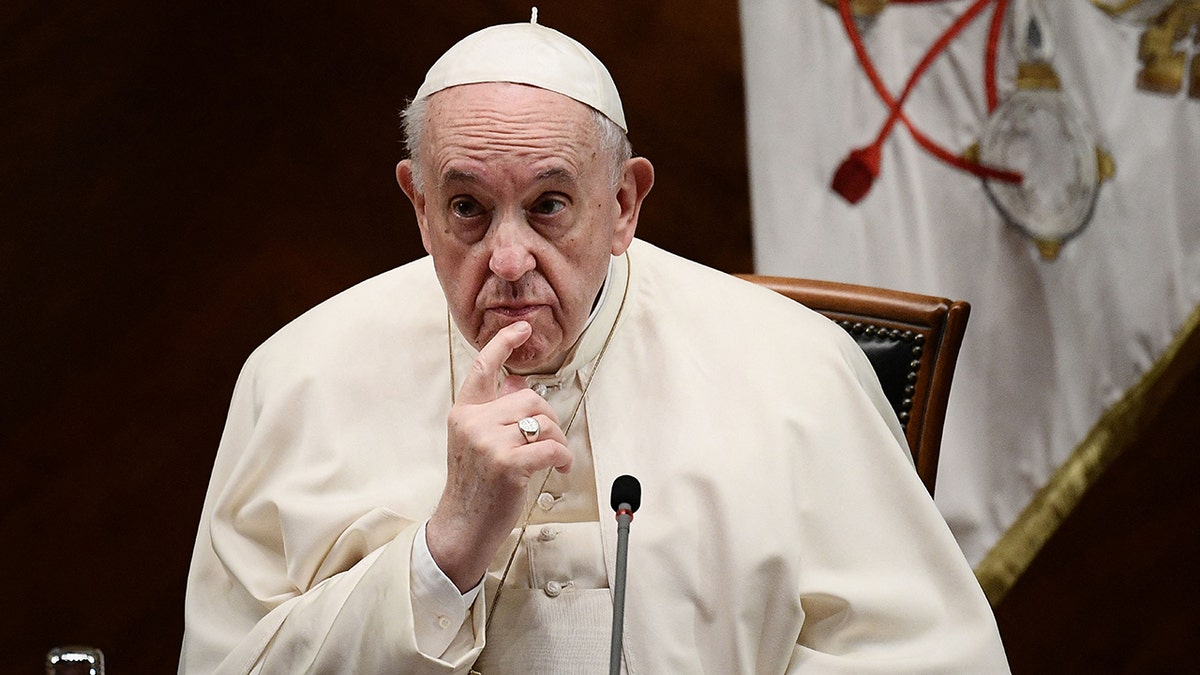
Pope Francis ponders during the inauguration of a UNESCO chair at the Pontifical Lateran University in Rome on Oct. 7, 2021. (Filippo Monteforte/AFP via Getty Images)
The pope grabbed the speaker’s arm.
«The pope puts his arm around me and kind of pulled me to him and said, ‘Please pray for me,’» said Boehner. «Wow. Who am I to pray for the pope?’ But I did.»
Boehner left the Capitol that night. But his encounter with the Holy Father seemingly transformed the speaker — and altered the trajectory of the House for years to come.
The speaker decided to resign the next morning.
«He had been trying to get out of here for years,» said one source close to the speaker at the time.
Boehner’s plans to depart were thwarted when the heir apparent, former House Majority Leader Eric Cantor, R-Va., stunningly lost his primary in the spring of 2014.
So Boehner soldiered on.
By late July 2015, former Trump White House chief of staff and former Rep. Mark Meadows, R-N.C., prepped a «motion to vacate the chair.» Those who follow Capitol Hill know all about such a motion now. But it was novel a decade ago. Such a motion would require the House to take a vote of confidence in the speaker in the middle of the Congress. Lawmakers had never used the tactic before. It was hardly discussed.
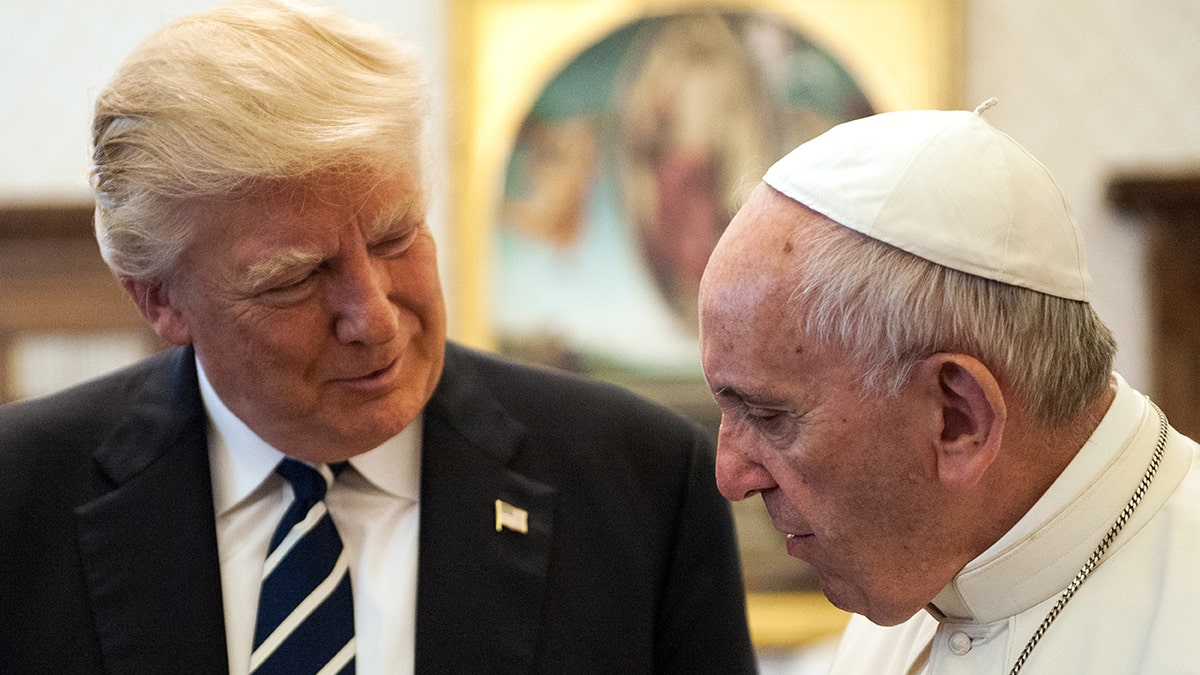
Pope Francis meets President Donald Trump in the Private Library of the Apostolic Palace in Vatican City on May 24, 2017. (Vatican/Pool/Galazka/Archivio Grzegorz Galazka/Mondadori via Getty Images)
Meadows released his resolution just before the August recess — but never triggered it.
That gave Boehner and the House a month to stew over whether Meadows might try to oust the speaker when lawmakers returned in September.
On the night after the pope’s visit, Boehner called his chief of staff, Mike Sommers, to tell him he planned to step aside. Boehner also told his wife, Debbie, of his plans.
«This morning I woke up, said my prayers, as I always do, and thought, ‘This is the day I am going to do this,’» said Boehner.
Boehner then astonished a meeting of the House Republican Conference that he intended to resign.
The move sent a shock wave through Washington.
«My first job as speaker is to protect the institution,» Boehner said. «It had become clear to me that this prolonged leadership turmoil would do irreparable harm to the institution.»
The Boehner departure — the day after his encounter with Pope Francis — set into motion what some might regard as the very «prolonged leadership turmoil» that the former speaker hoped to avoid.
It was believed that former House Speaker Kevin McCarthy, R-Calif. — then the House Majority Leader — would ascend to the job. But as startling as Boehner’s departure was, McCarthy supplanted that. Moments before House Republicans were set to tap McCarthy as the next speaker, McCarthy withdrew from the contest. He lacked the votes.
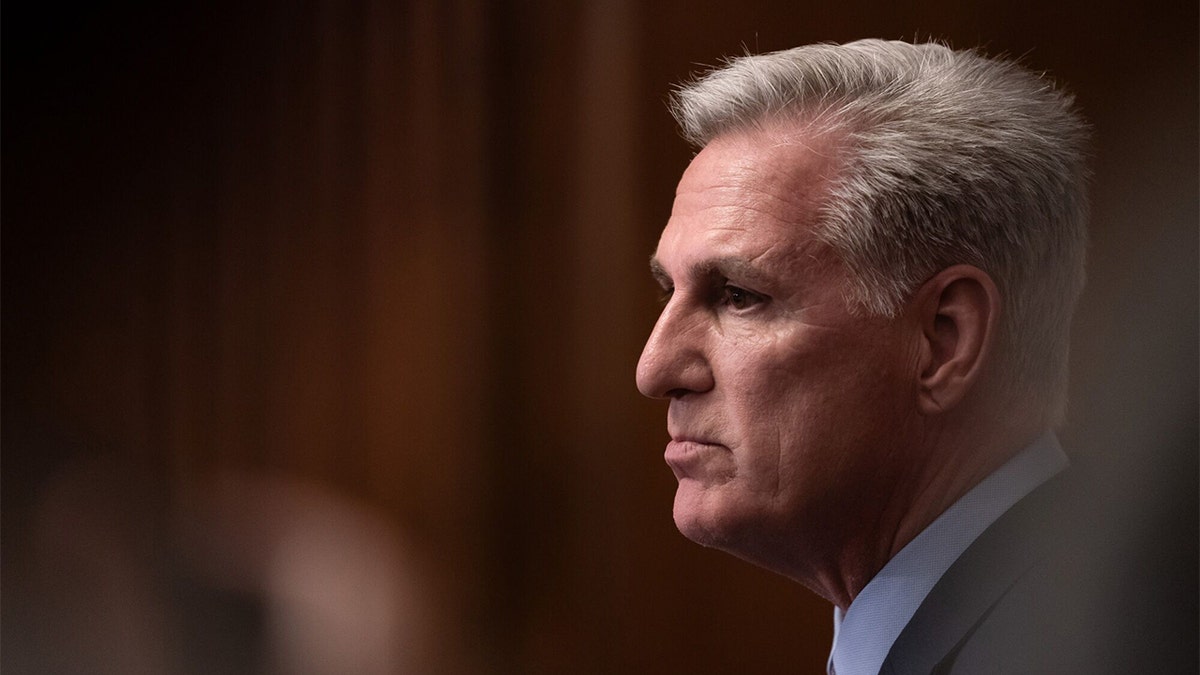
Rep. Kevin McCarthy, R-Calif., looks on at the U.S. Capitol in Washington, D.C., on Oct. 3, 2023. (Nathan Howard/Bloomberg via Getty Images)
McCarthy’s decision roiled Capitol Hill for weeks. Former House Speaker Paul Ryan, R-Wis., eventually took the job. But Ryan was reluctant. He even put out a statement that he didn’t want it.
Others jumped in: Rep. Daniel Webster, R-Fla., along with former Reps. Jason Chaffetz, R-Utah, and Bill Flores, R-Texas.
But Ryan finally came around. Fox was told at the time that if Ryan hadn’t come around, «there would be blood on the floor» of the House as Republicans waged an internecine donnybrook.
Ryan remained as House speaker until he retired in early 2019. Democrats won the House in the 2018 midterms. Former House Speaker Nancy Pelosi, D-Calif., returned to the speakership she held eight years before.
But Democrats lost the House in the 2022 midterms. And even though McCarthy touted a 40-plus-seat rout for the GOP, Republicans controlled the House by a thread.
DICK DURBIN, NO 2. SENATE DEMOCRAT, WON’T SEEK RE-ELECTION
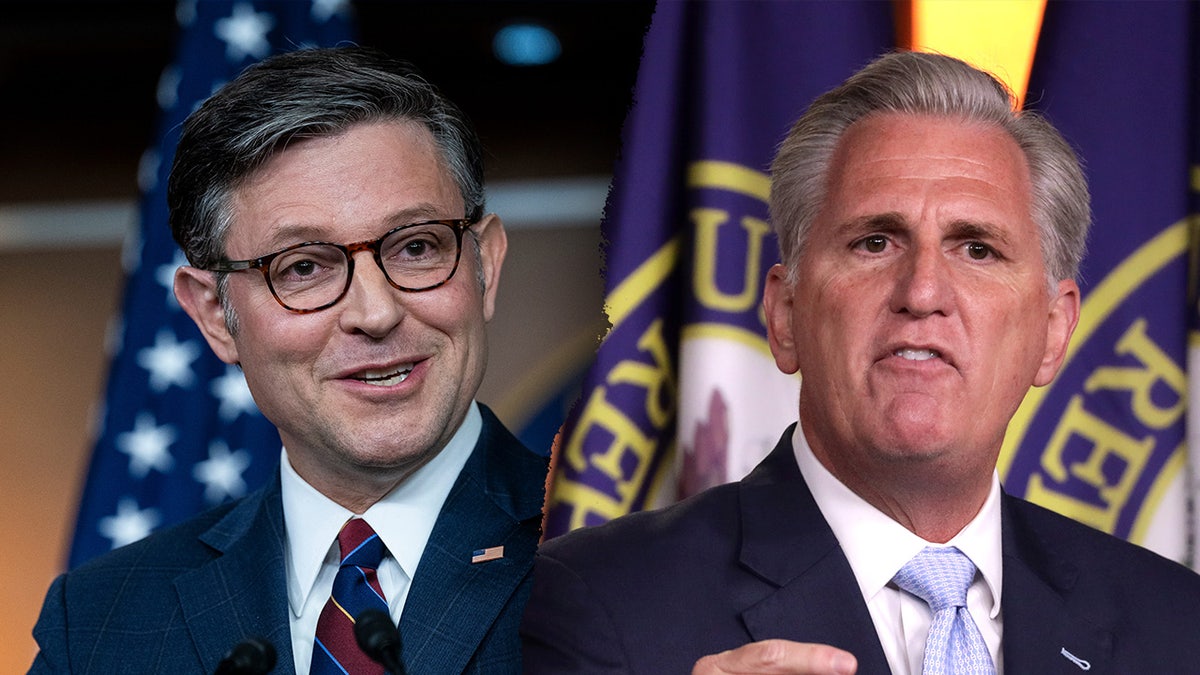
House Speaker Mike Johnson, R-La., left, and former House Speaker Kevin McCarthy, R-Calif. (Getty Images)
Thus, it set into motion a five-day battle in early 2023 as McCarthy struggled for 15 rounds before winning the speakership. It was the longest speaker’s race since the mid-19th century.
But McCarthy was gone by early November.
Remember that «motion to vacate the chair» mentioned earlier?
Meadows never activated his motion in 2015. But former Rep. Matt Gaetz, R-Fla., did in 2023.
McCarthy was done. And the House spent three weeks trying to elect a new speaker.
First they tried House Majority Leader Steve Scalise, R-La. Then House Judiciary Committee Chairman Jim Jordan, R-Ohio. Then House Majority Whip Tom Emmer, R-Minn.
None prevailed.
Finally, a backbencher emerged from the fray: House Speaker Mike Johnson, R-La.
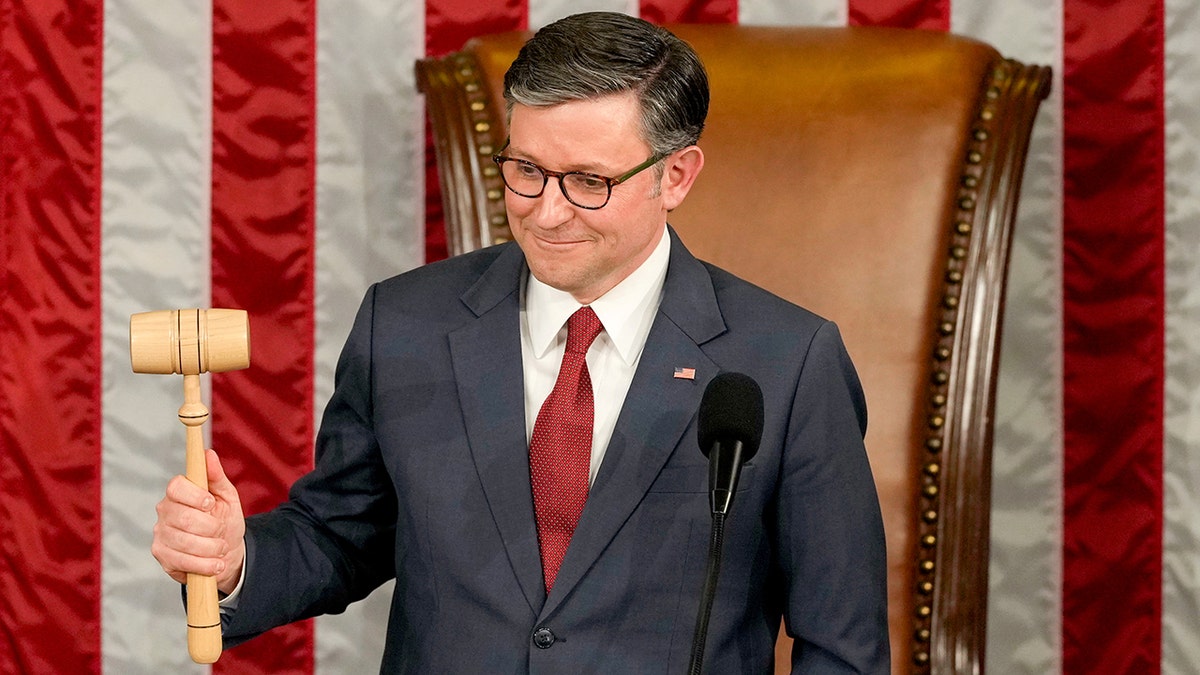
Rep. Mike Johnson, a Republican from Louisiana, holds the gavel after being re-elected House speaker during the first session of the 119th Congress in the House Chamber of the Capitol in Washington, D.C., on Jan. 3. (Kent Nishimura/Bloomberg via Getty Images)
The House of Representatives has never quite been the same since Boehner made his surprise announcement after his encounter with Pope Francis. The speakership seems to teeter on an edge these days — at least when Republicans run the chamber. Johnson periodically endures threats to «vacate the chair.» Rep. Marjorie Taylor Greene, R-Ga., tried to bounce him just last year.
During the speaker succession fight of 2015 and the three-week speaker debacle of 2023, friends asked if «white smoke» would emanate from the Capitol Dome. They facetiously suggested that it would signal the election of a new House speaker.
The College of Cardinals will begin a conclave in Rome in a few days to select a successor to Pope Francis. It’s a political process. Not unlike what happens in Congress when there’s a vacancy in the speakership. We’ll know there’s a new pope when white smoke wafts out of a duct atop the Sistine Chapel.
CLICK HERE TO GET THE FOX NEWS APP
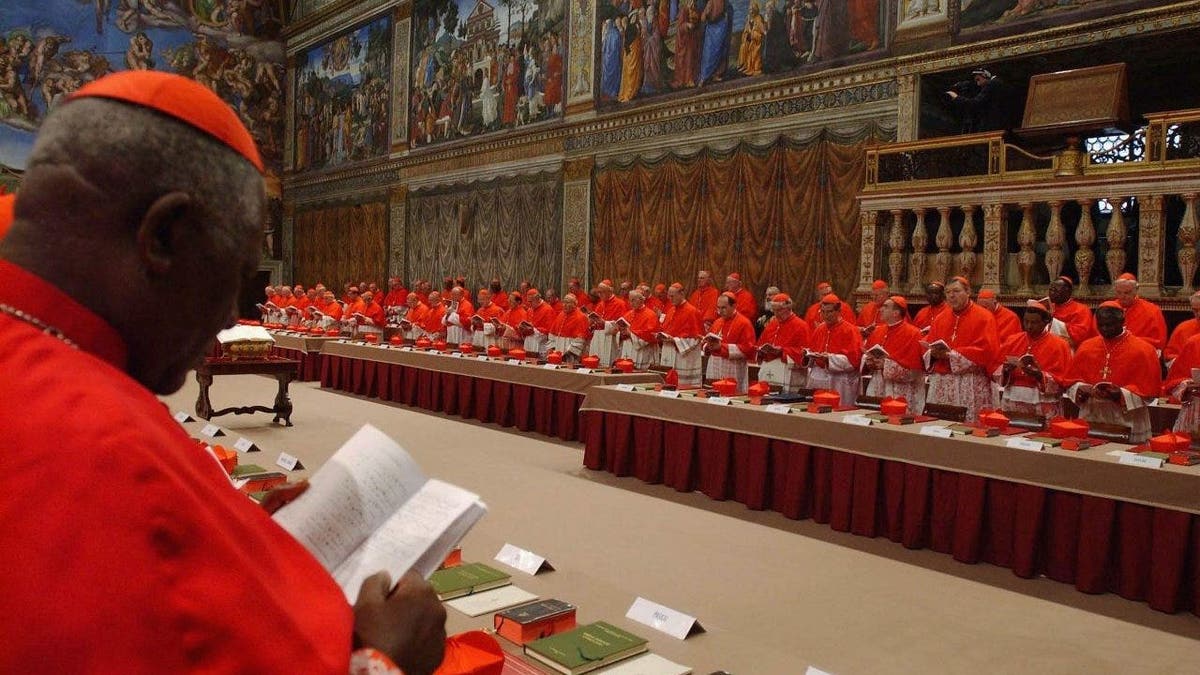
Cardinals of the Catholic Church attended the election conclave in the Sistine Chapel at the Vatican in Vatican City on April 18, 2005. (Arturo Mari, Vatican Pool)
It was an important day when Pope Francis spoke to a Joint Meeting of Congress in 2015. But in sheer Congressional terms, the day afterward was seismic for the nature of the institution. Boehner’s abrupt resignation ushered in an unsettled era about who presides over the House. The visit by Pope Francis and Boehner’s departure forever melded the two together in the annals of Capitol Hill.
And as a result, whenever there’s a House speaker interregnum in the future, political observers will always look for political «white smoke» to find out if lawmakers have settled on a new leader.
Politics,Pope Francis,Congress,House Of Representatives
INTERNACIONAL
Fox News Politics Newsletter: Adams to back Cuomo in NYC mayoral race
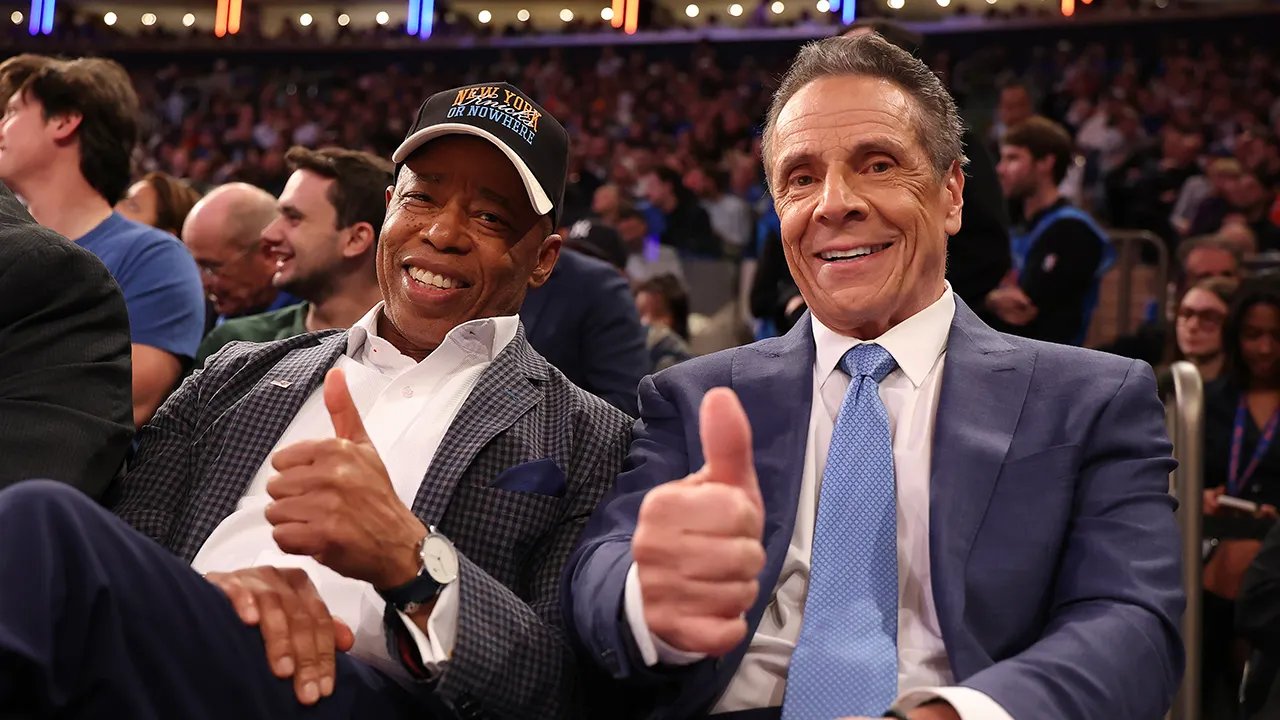
NEWYou can now listen to Fox News articles!
Welcome to the Fox News Politics newsletter, with the latest updates on the Trump administration, Capitol Hill and more Fox News politics content. Here’s what’s happening…
–Red state university student caught on video threatening lives of Charlie Kirk supporters: ‘Watch your neck’
-Curtis Sliwa vows to be Zohran Mamdani’s ‘worst nightmare’ if the Democratic socialist wins NYC mayoral race
-Undercover video exposes what Spanberger’s campaign organizer really thinks of her: ‘What the f—‘
NYC Mayor Adams to endorse Cuomo in race against Mamdani
New York City Mayor Eric Adams will endorse former New York Gov. Andrew Cuomo in the city’s mayoral race as he faces off against Democratic nominee Zohran Mamdani.
«As spokesman for Mayor Eric Adams, I can confirm that the Mayor will endorse former Governor Andrew M. Cuomo for mayor and intends to campaign alongside him,» Adams’ spokesman, Todd Shapiro, said in a statement to Fox News. «The time and locations for their joint appearances are currently being finalized.»
Adams declined to answer questions about Cuomo at an unrelated press conference Thursday morning…READ MORE.
New York Mayor Eric Adams poses with Independent candidate former New York Gov. Andrew Cuomo after Cuomo participated in the second debate for the upcoming mayoral election on Wednesday evening. (Al Bello/Getty Images)
White House
HOMEGROWN POWER: Apple building American-made AI servers ahead of schedule in new Houston facility, answering Trump call
NEW DETAILS: SCOOP: Trump’s Memphis crime crackdown locates dozens of missing kids, removes 109 gangbangers from streets
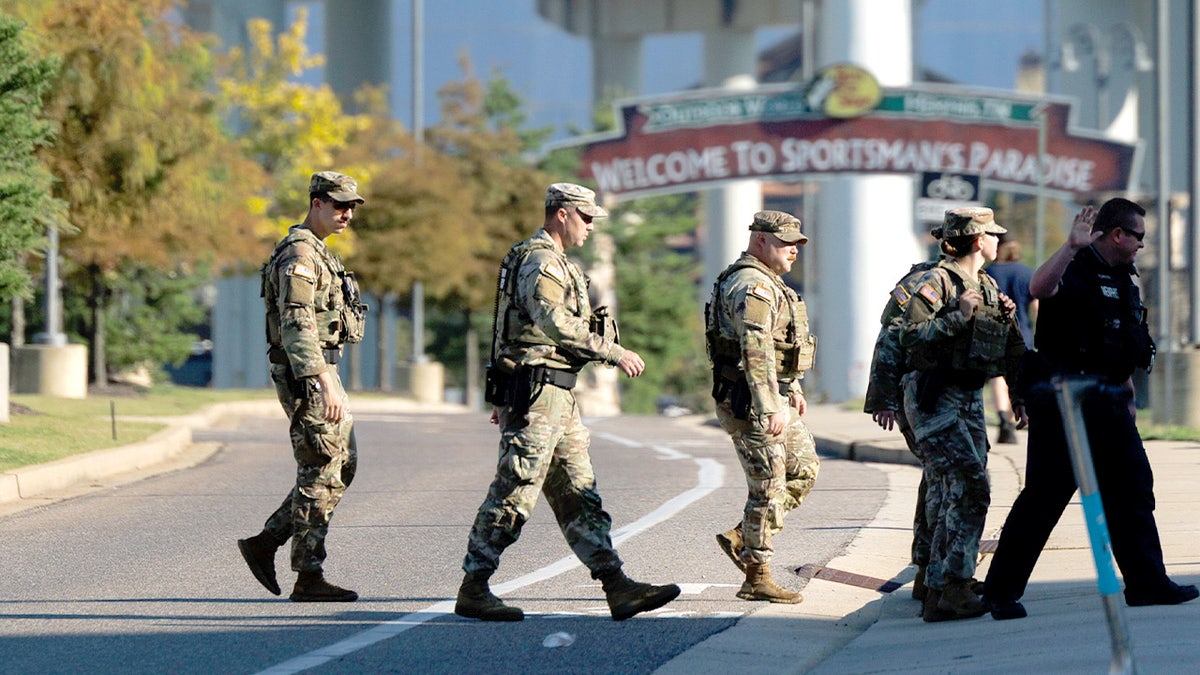
National Guard members began patrolling Memphis, Tennessee, in October as part of a federal task force established by President Donald Trump to combat what the administration says is violent crime in the city. (Brett Carlsen/Getty Images)
NO PEACE TALKS: Trump ‘not interested’ in de-escalation with ‘unhinged’ leader of Colombia, White House says
ON PAUSE: Trump freezes out Putin for lack of ‘enough action’ toward peace — future talks uncertain
BLUNT DIPLOMACY: Inside Trump’s ultimatum that forced Netanyahu to the table: ‘You can’t fight the world’
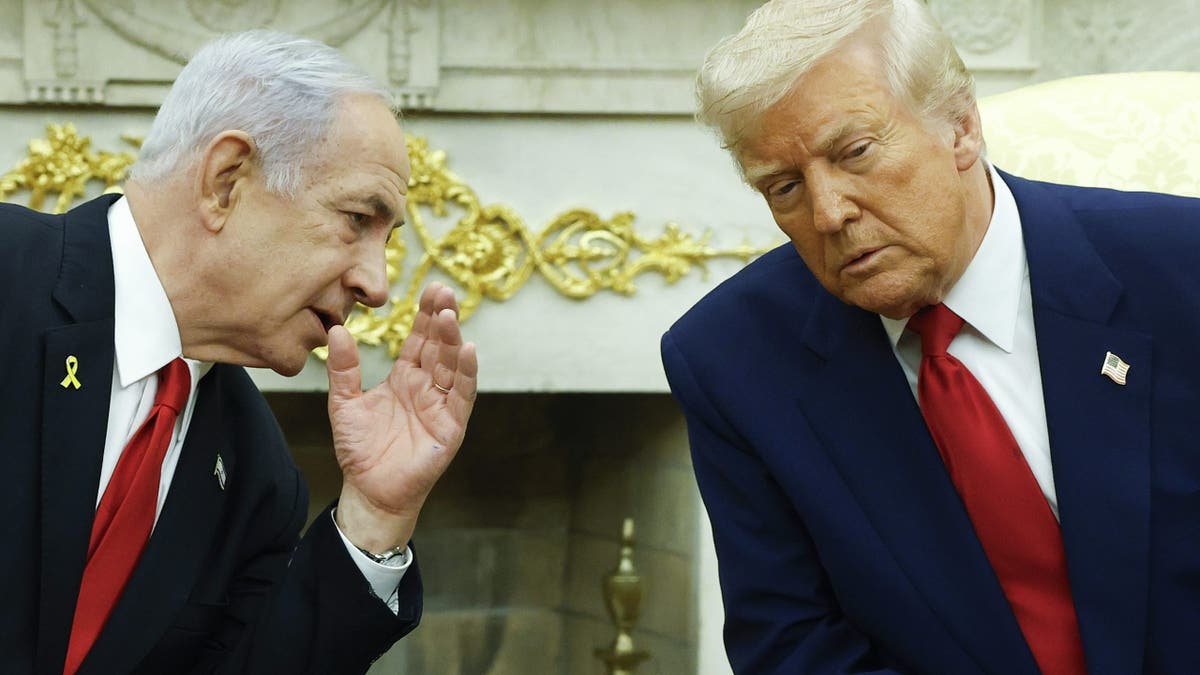
Israeli Prime Minister Benjamin, left, talks to President Donald Trump during a meeting in the Oval Office of the White House April 7, 2025, in Washington. (Kevin Dietsch/Getty Images)
World Stage
SKY VIOLATIONS: Russia violates NATO airspace in Lithuania amid Putin warning on long-range missiles
‘AMAZING BLESSING’: Vance visits church where Christians believe Jesus was crucified, resurrected amid Israel-Hamas ceasefire
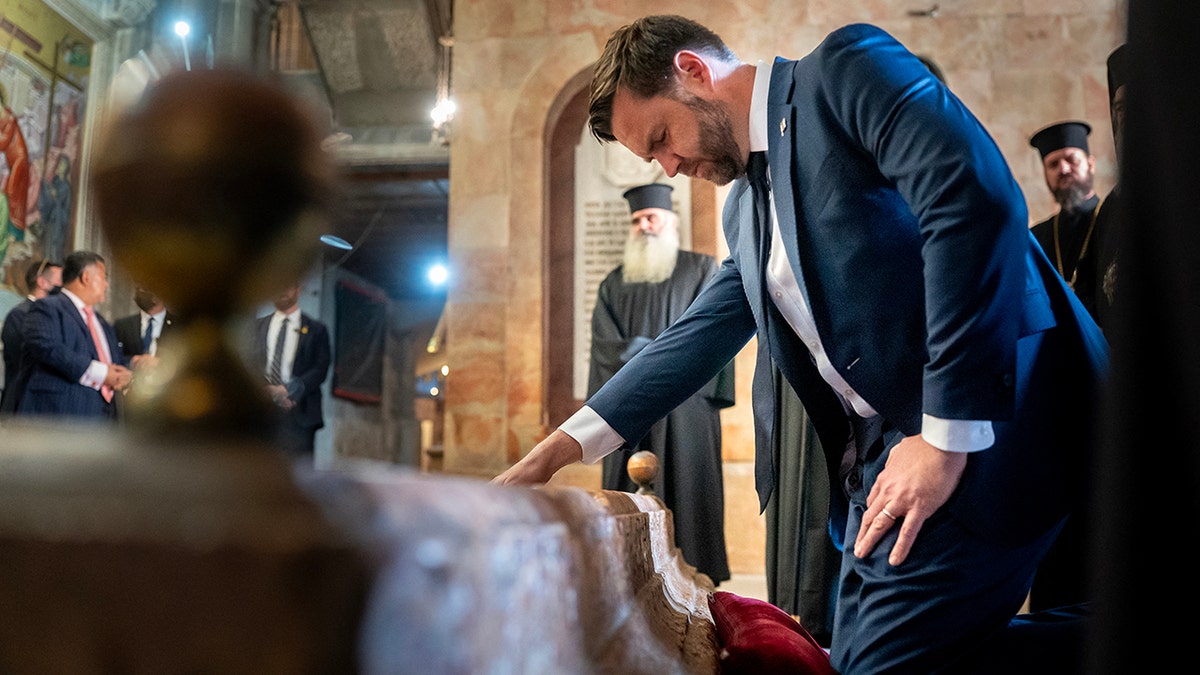
Vice President JD Vance tours The Church of the Holy Sepulchre in the Old City of Jerusalem Oct. 23, 2025. (Nathan Howard/Pool/AFP via Getty Images)
NO MORE GAMES: After waffling between Russia and Ukraine, Trump slaps Kremlin with oil sanctions
Capitol Hill
SNAP OUT OF IT: Democrats under fire as food stamp funds run dry: 42 million Americans caught in shutdown fight
NO PAY FOR YOU: Essential workers left unpaid after Senate Democrats kill pay bill
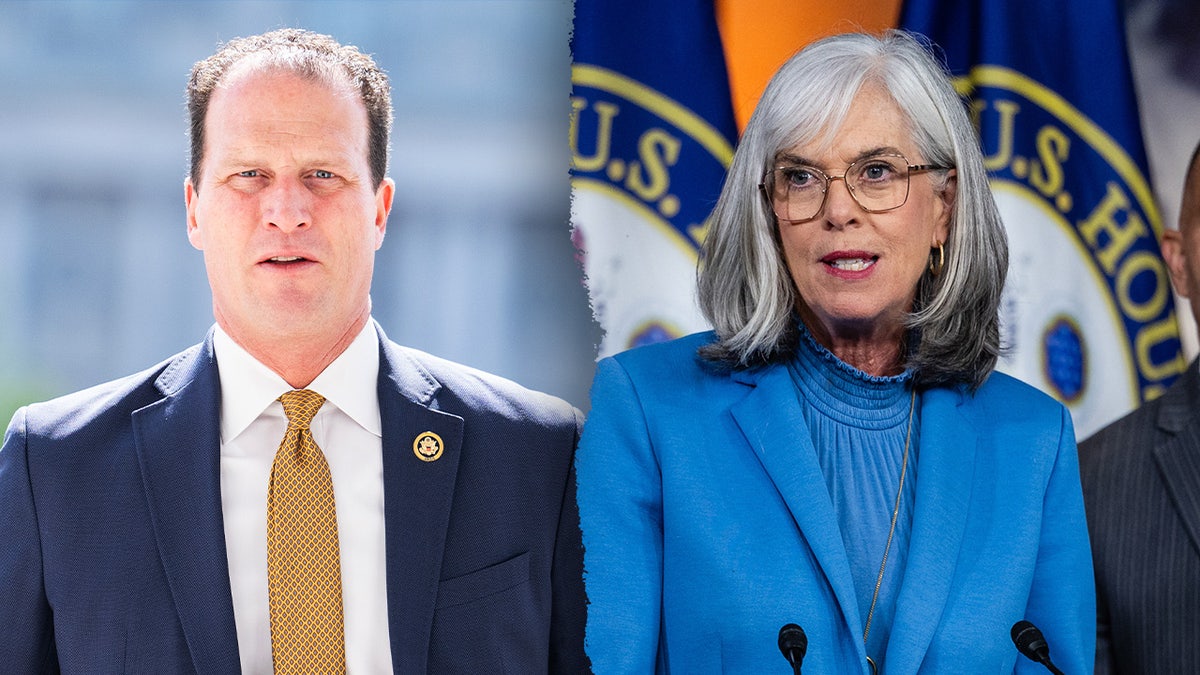
Republican Study Committee Chairman August Pfluger is criticizing House Minority Whip Katherine Clark’s comments in a recent interview on the government shutdown. (Tom Williams/CQ-Roll Call, Inc via Getty Images; Eric Lee/Bloomberg via Getty Images)
HOSTAGE POLITICS: Top Republican slams Katherine Clark for admitting suffering families are «leverage» in shutdown battle
SOCIAL-IST STANDING: Bernie Sanders defends Maine Senate candidate under fire for wild Reddit comments
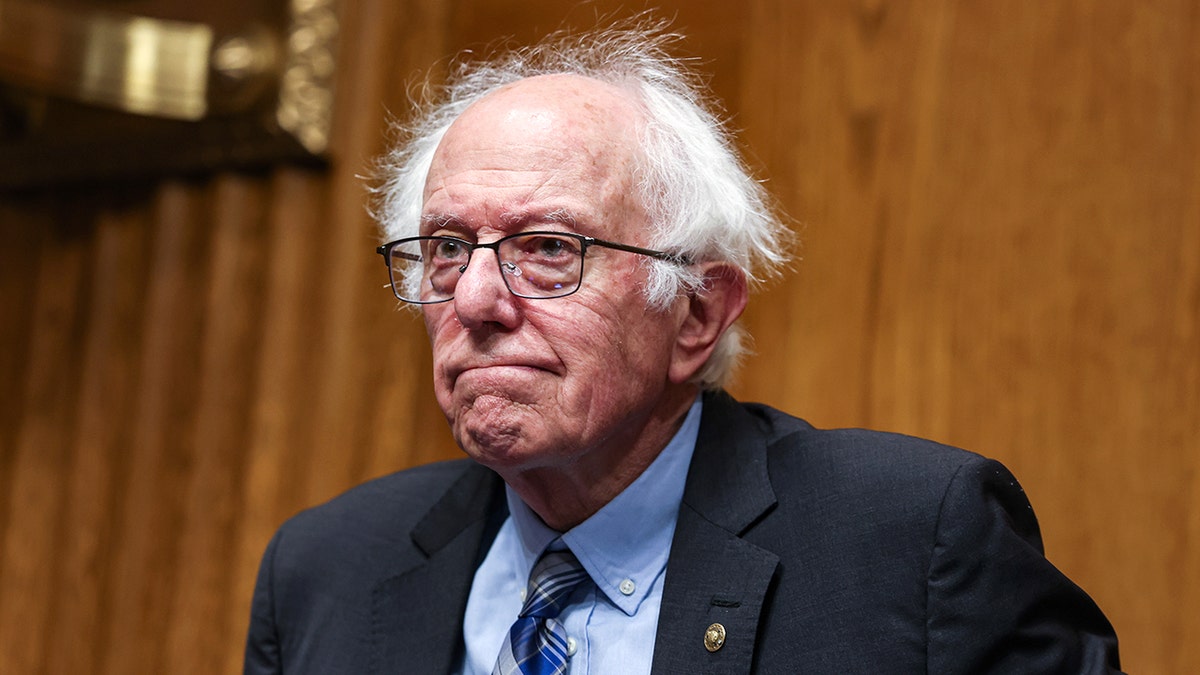
Senator Bernie Sanders, an Independent from Vermont and ranking member of the Senate Health, Education, Labor, and Pensions Committee, arrives for a confirmation hearing in Washington, July 16, 2025. (Valerie Plesch/Bloomberg via Getty Images)
Across America
HALF IN, HALF OUT: Trump yet to endorse in VA governor’s race — but also kept Youngkin at arm’s length
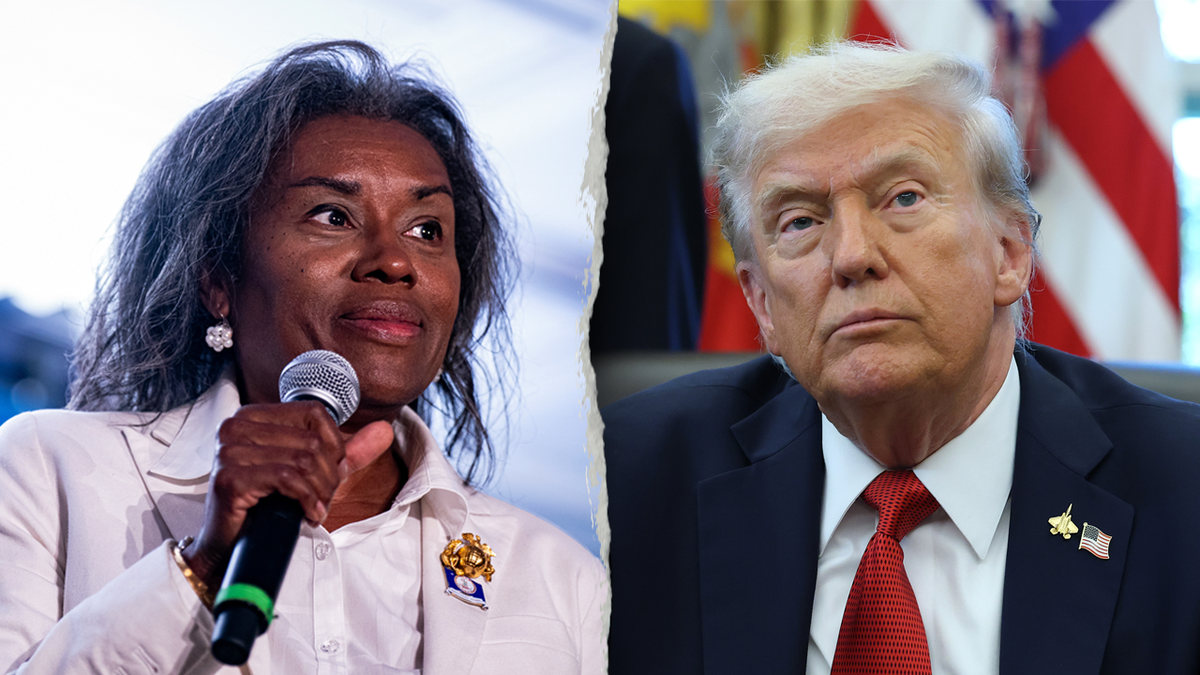
Virginia Lt. Gov. Winsome Sears, left; President Trump, right. (Al Drago/Getty Images; Anna Moneymaker/Getty Images)
MIXED BAG: New poll in key showdown for Virginia governor indicates single-digit race
FOOD FIGHT: Youngkin declares state of emergency over «Democrat Shutdown» depleting food stamp benefits for nearly 1M Virginians
AI ATTACK: Andrew Cuomo campaign walks back controversial attack ad targeting Mamdani voters
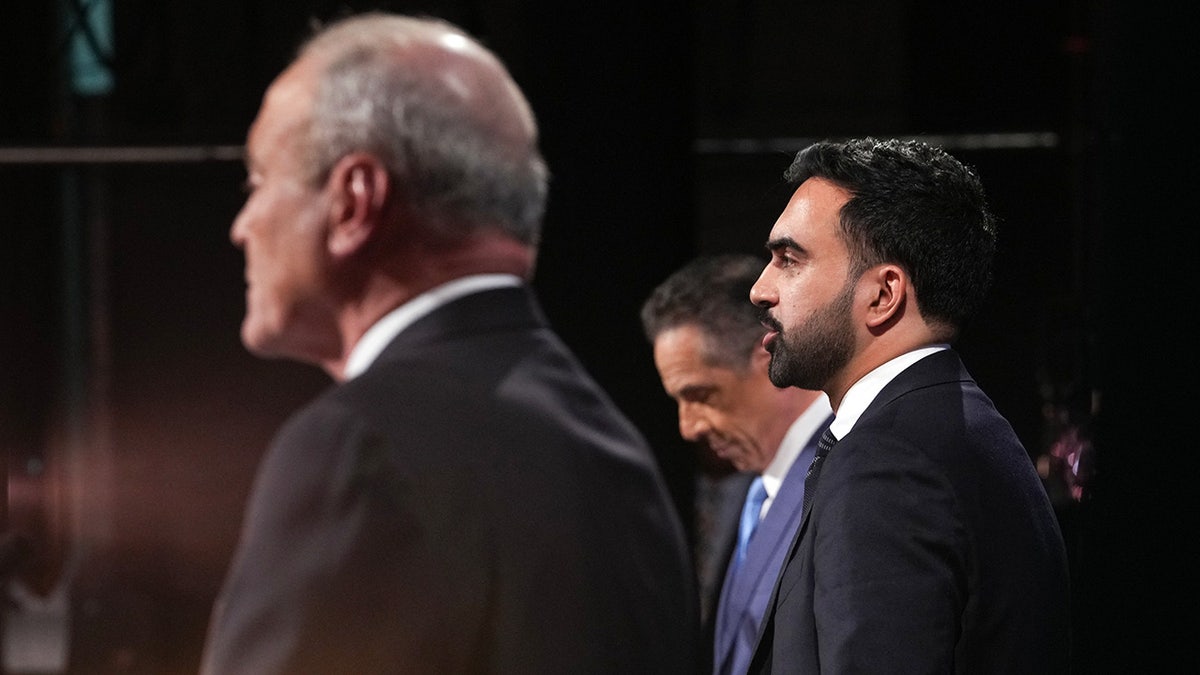
Democratic candidate Zohran Mamdani, right, Republican candidate Curtis Sliwa, left, and Independent candidate and former New York Governor Andrew Cuomo. (Hiroko Masiuke/POOL/AFP via Getty Images)
CAMPAIGN CLASH: Social media erupts after Cuomo, Mamdani rip each other during final debate: ‘Unmasked’
‘CALL TO ACTION’: NYC rabbis sound off on «unprecedented risk» Mamdani poses as hundreds of leaders sign «call to action»
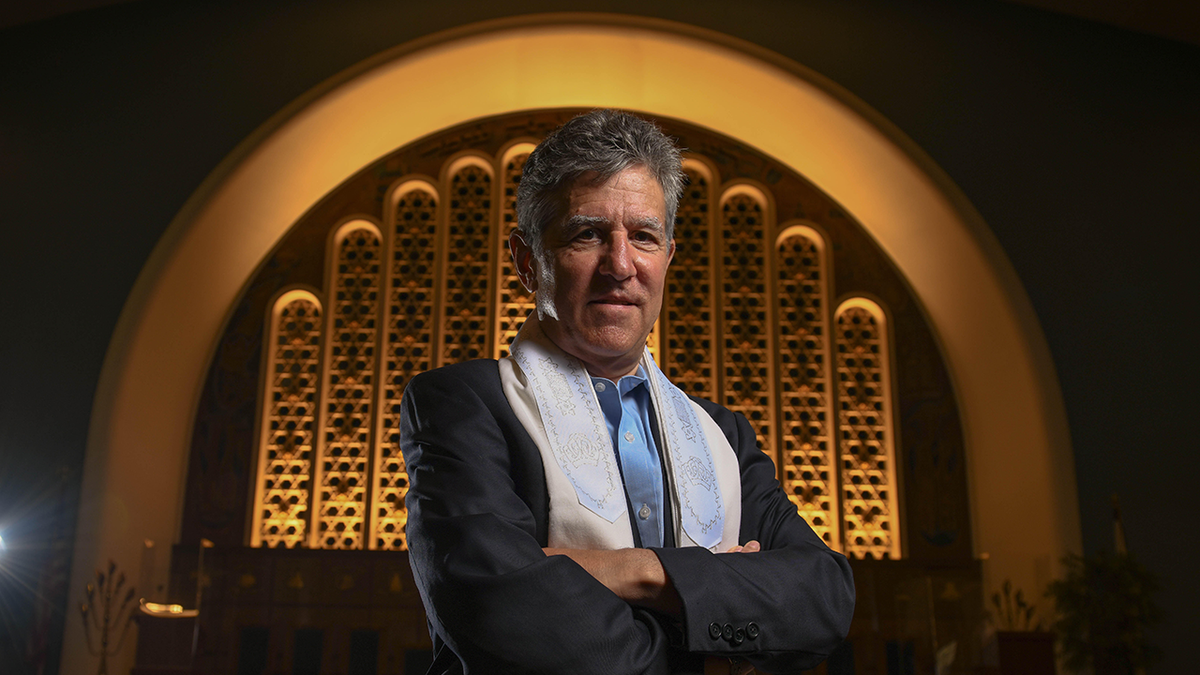
Rabbi Ammiel Hirsch accused New York City mayoral candidate Zohran Mamdani of «fanning the flames of intolerance» with two weeks until Election Day. (Shahar Azran)
SECOND GUESSING: NYC socialist mayoral candidate Mamdani’s 911 plan called «worst idea» by former NYPD sergeant
Get the latest updates on the Trump administration and Congress, exclusive interviews and more on FoxNews.com.
elections newsletter
INTERNACIONAL
Lecturas para el fin de semana: cómo radicalizar el dolor
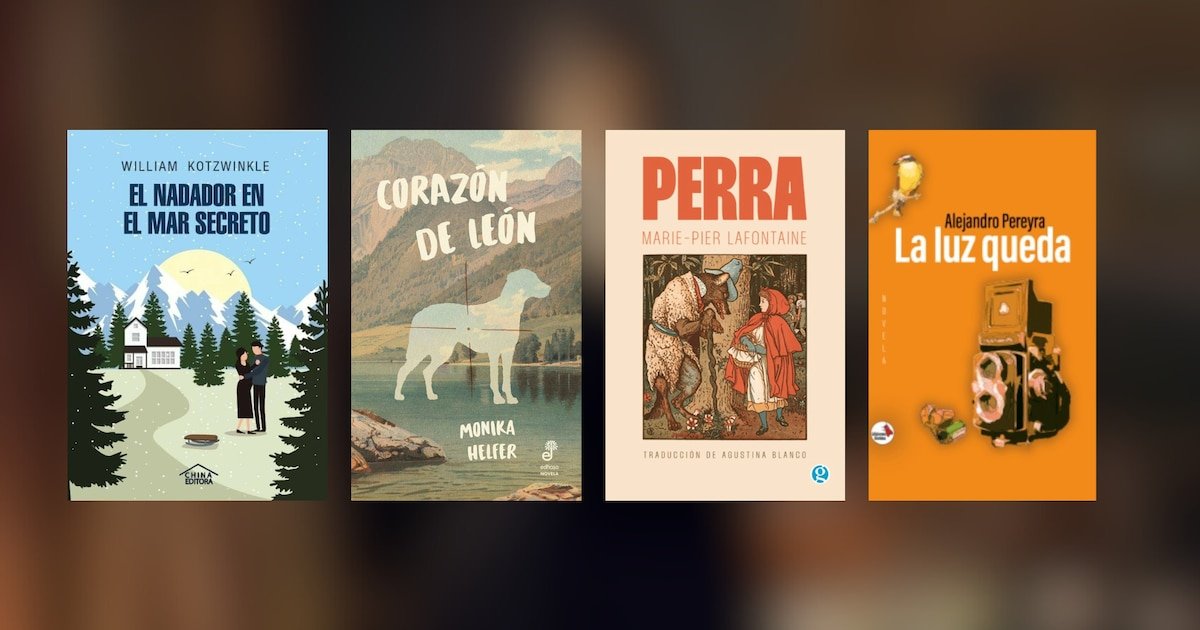
Habitar el dolor ajeno. ¿Es posible? Tomarlo con las manos, acobijarlo en el pecho, compungirse hasta el llanto, concentrarse en su textura, no dejarlo ir. La empatía trafica esa idea, pero, como escribió Alexandra Kohan, “no podemos entrar los dos en los zapatos de uno”. El otro es el otro y, en tanto otredad, es inquietante, imposible. En ese sentido, la literatura abre una posibilidad en el espacio, la de sumergirse en una narración ficcional que, al ser un artificio, radicaliza al extremo la emoción.
En algún punto, la lectura es un vacío. Un lugar sin notificaciones ni publicidad ni imágenes identificables. Esa zona donde el lenguaje imagina la pureza. Y si entendemos que la ficción no es un sinónimo de la mentira, sino una forma de contar la verdad, el lector se permite algo imposible: habitar el dolor ajeno. Porque el dolor está en el pecho de los personajes, en la atmósfera de las escenas, en la prosa, en la trama, pero no en él, que está del otro lado, ¿a salvo? Quizás ocurra exactamente lo contrario.
“Fijate, ¿lo llegás a ver? Casi no se ve, pero ¿no te parece asombroso ese alerce solo ahí, altísimo, resaltado en la llanura? Hasta tiene el tupé de competirle el protagonismo al horizonte». Un padre con una enfermedad avanzada y su hija viajan en auto hasta Buenos Aires: se tiene que hacer un estudio. Pero se detienen en un pueblo, en una casa, alguien familiar. Él fuma, ella lo reta. “¿Cómo no fotografiarlo?“, dice mirando el árbol, él que es fotógrafo. “¿Sin luz?”, pregunta ella. “Mañana, si se despeja (…) Es la última”.

La luz queda se llama la novela que acaba de publicar Diotima. Su autor es Alejandro Pereyra, escritor, guionista, director de cine. Es brevísima y la narración se agolpa en las páginas, no con apuro, sino con intensidad. “Voy a dejar la fotografía, Romina, antes de que ella me deje a mí“. Cuando ella le pide ”no te pongas trágico», que “va a salir todo bien”, él le dice: “No entendés, Romina. No es por mi cuerpo, por esa mierda que tengo. Solo que esta foto es el punto final perfecto. La vengo pensando hace tiempo”.
Después la literatura hace su trabajo: aparecen otras voces, el paisaje se vuelve una inundación, los pensamientos flotan y las intenciones vuelan. De pronto, “todo es de verdad, hasta la dulzura de mierda”. Y Arturo, el padre, el fotógrafo, sueña con otra foto, pero no es tan fácil. “Los días son todos diferentes” pero “la noche es siempre la misma”. Y la historia va cerrándose, la enfermedad no cesa, y “ya casi no se aguanta el dolor. Pero estate tranquilo, que siempre se trató de amor. Aunque no lo entiendan”.
Cuando Marie-Pier Lafontaine entendió que solo había dos opciones, escribir o prender fuego la casa familiar, escupió Perra. Son ochenta y pico de páginas intensas que narran una dura historia de abuso. Cuando estuvo fuera de esa cárcel de anhelos reventados, el testimonio se hizo literatura. Pero lo novedoso de este libro de 2020 y traducido el año pasado por Agustina Blanco para Ediciones Godot no es este acontecimiento —¿cuántos víctimas han podido narrar sus tragedias en libros?—, sino la mirada.
“Entre todas las leyes del padre, había una de índole fundamental: no contar”, comienza Perra. “De niña, disimulaba mis deseos en textos de ficción. Dos hermanas en fuga. Perseguidas por un monstruo de dos cabezas. Huían por sombríos bosques. Se armaban con ramas, palos. Hoy ya no escondo mis deseos. Quisiera que este texto diezmara a mi familia toda”, escribe esta canadiense nacida en 1988 en Montreal, dentro de “la parte francesa”, autora también de Armas para la rabia.

Por momentos, la hoja se pone de un negro completo con frases así: “Al padre le encanta hacernos saber que piensa en nosotras cuando eyacula. Se las arregla siempre para que lo oigamos”. O también: “Los alaridos se detienen. El padre sale del cuarto de mi hermana. Carraspea. Sus pasos resuenan hasta la otra punta del pasillo. Va al encuentro de la madre”. O: “Mi hermana y yo solo con tomarnos de la mano sabemos con certeza que sobreviviremos al padre”. O: “¿Nuestros vecinos nunca oyeron nada?”
Los recuerdos no se eligen, aparecen como un relámpago en la noche, pero elegimos qué contar. Desde las primeras páginas de Corazón de león de Monika Helfer, que acaba de ser traducido por Gabriela Adamo para Edhasa, sabemos que el hermano de la narradora está muerto. Lo que sigue es una novela en retrospectiva: un personaje que ya no existe, pero que aparece, intrépido y subversivo, en las escenas ahora narradas. Las historias son delirantes y divertidas, pero tienen la inocultable pátina de la tristeza.
Entre esos recuerdos aparece el día en que su hermano conoció a su actual marido, entonces su amante. Su marido estaba de viaje, sus hijos con los abuelos; la casa y el fin de semana para el romance. Y su hermano, tocó el timbre. “Los presenté, conversamos y tomamos vino y fumamos un poco de la hierba que él cultivaba; cuando se despidió, le dijo que le caía bien y que el hecho de que tuviera una relación conmigo, su hermana, solo podía entusiasmarlo, porque todo lo que me hiciera bien lo entusiasmaba”.

“¡Johnny, acabo de romper bolsa!“ En un pueblo del interior profundo de los Estados Unidos, año 1970 y pico, una mujer está a punto de dar a luz. Vive en el campo, en una cabaña junto a su esposo entre el frío y la soledad. Tienen treinta años y han esperado con mucha ansiedad este momento. Suben a la camioneta en las primeras horas de la mañana y conducen unos cuantos kilómetros hasta el hospital con la esperanza de conocer a su hijo, el primogénito. Sin embargo el bebé nace muerto.
A grandes rasgos, esa es la historia narrada en El nadador en el mar secreto, novela breve, profunda, sensible, que publicó William Kotzwinkle en 1975. Es autobiográfica, porque eso le ocurrió: perdió a su primer hijo ni bien salió de la panza de su esposa. Mientras el dolor se agitaba con violencia dentro de su pecho, se encerró en su estudio y se puso a escribir “con las lágrimas en los ojos desde la primera a la última página”. Una revista norteamericana la publicó en el viejo formato de novela por entregas.

La novela ganó varios premios; luego, el olvido. En 2019 la reeditó el sello argentino China Editora. El nadador en el mar secreto no ahonda en sentimientos, ni siquiera se demora en describirlos. La pareja protagonista atraviesa dos momentos de extremos: el parto y la muerte. En su brevedad, la narración adquiere potencia y genera efectos. ¿Qué efectos? Diría que esta novela convierte al lector, incluso al más insensible, en una criatura más vulnerable. Podría decirse que lo devuelve a la realidad.
En nombre de ser comprensivos, no dejamos de arrasar con el otro poniéndole nuestras suposiciones, nuestras atribuciones, nuestras fantasías. Creemos que el otro necesita lo que nosotros creemos que necesita, lo que nosotros necesitaríamos en su lugar. Y, muchas veces, sin ni siquiera haber escuchado del otro ningún pedido. No es poco frecuente que se diga “te entiendo, a mí me pasa lo mismo” y que se corra entonces la conversación hacia lo que me pasa entonces a mí. ¿Por qué hay que pasar por uno para entender al otro? Porque eso es justamente la comprensión. El asunto es, si resulta soportable acompañar a otro resistiéndose a entenderlo, aún en su incomprensibilidad, aún en su ilegibilidad.
“La empatía supone que entre el yo y el otro no hay nada: no hay fantasías, suposiciones, fantasmas, lenguaje: nada, nada de nada”, escribió Alexandra Kohan. “El otro nos es transparente y absolutamente escrutable del mismo modo en que el sí mismo se advierte transparente y escrutable”.
INTERNACIONAL
Donald Trump y el combate contra los carteles del narcotráfico: «Pronto veremos acciones en tierra en Venezuela»

China está utilizando a Venezuela para el tráfico de fentanilo», denunció hoy Donald Trump -aunque sin pruebas- en una afirmación durante una mesa redonda sobre la lucha contra los carteles de la droga y el tráfico de personas en la Casa Blanca. «Pronto veremos acciones en tierra en Venezuela», declaró al abrir la mesa redonda.
Trump anunció que su primera pregunta a Xi Jinping en su próximo encuentro la próxima semana se centrará precisamente en el fentanilo, por el cual su administración ha impuesto aranceles a Beijing.
Hasta ahora, Estados Unidos ha llevado a cabo operaciones marítimas contra supuestas embarcaciones de narcotraficantes en aguas internacionales.
En tanto, al menos un bombardero B-1B estadounidense sobrevoló el mar Caribe frente a la costa de Venezuela, según datos de seguimiento de vuelos. Se trata de la segunda demostración de fuerza de aeronaves militares estadounidenses en una semana.
El vuelo del bombardero —que el presidente Trump posteriormente afirmó falsamente que nunca ocurrió— se produce mientras Washington continúa una campaña militar contra presuntos narcotraficantes en la región, desplegando fuerzas que han suscitado temores en Caracas de que el objetivo final sea un cambio de régimen.
Datos del sitio web de seguimiento Flightradar24 mostraron un B-1B volando hacia la costa venezolana el miércoles por la tarde antes de revertir su rumbo y dirigirse al norte, tras lo cual desapareció de la vista.
Al ser preguntado en un evento en la Casa Blanca sobre los informes de que Estados Unidos había enviado B-1B cerca de Venezuela, Trump respondió que «eso es falso» y añadió que Estados Unidos «no está contento con Venezuela por muchas razones».
Video
Dos muertos tras el ataque de EE.UU. contra otro supuesto barco con drogas.
El último vuelo tuvo lugar aproximadamente una semana después de que bombarderos B-52 estadounidenses sobrevolaran la costa venezolana durante varias horas.
«No creo que vayamos a pedir una declaración de guerra contra los cárteles de la droga«, dijo Donald Trump en respuesta a una pregunta sobre si no sería más fácil hacer tal declaración dadas las continuas redadas a embarcaciones de presuntos narcotraficantes.
Las operaciones ahora se abrieron también al Pacífico, cerca de las costas de Colombia, donde militares estadounidenses hundieron ayer una lancha presuntamente del narcotráfico con dos personas.
Esto llevó a una dura reacción desde Bogotá. El presidente colombiano Gustavo Petro acusó a Estados Unidos de cometer «ejecuciones extrajudiciales» como parte de sus operaciones militares en el Caribe y en el Pacífico para frenar el narcotráfico en estas rutas.
«Este tipo de maniobras violan el derecho internacional y constituyen ejecuciones extrajudiciales, ya sean traficantes o desconocidos», declaró Petro en rueda de prensa. «En ambos casos, esto representa un uso desproporcionado de la fuerza, prohibido por el derecho internacional humanitario», añadió.
El presidente Nicolás Maduro reveló que Venezuela cuenta con 5.000 misiles tierra-aire portátiles rusos para contrarrestar el despliegue de las fuerzas estadounidenses en el Caribe.
Washington ha desplegado aviones de combate furtivos y buques de la Armada en el Caribe como parte de lo que denomina esfuerzos antinarcóticos, y ha destruido al menos ocho embarcaciones que, según afirma, contrabandeaban drogas desde Venezuela hacia Estados Unidos
El ministro de Defensa de Venezuela dijo que cualquier operación de la CIA contra su país «fracasará», luego que Trump autorizara operaciones de inteligencia contra objetivos del chavismo.
Estados Unidos desplegó en el Caribe una flotilla de destructores, un submarino y barcos con fuerzas especiales para operaciones militares que llevaron al bombardeo de lanchas «narcoterroristas» procedentes de Venezuela.
Venezuela asegura no obstante que se trata de un plan para derrocar al presidente Nicolás Maduro. Trump autorizó la semana pasada las operaciones encubiertas.
«Sabemos que la CIA está presente no solamente en Venezuela, sino en todas partes del mundo», dijo el ministro Vladimir Padrino. «Podrán meter no sé cuantos cuerpos adscritos a la CIA en operaciones encubiertas desde cualquier flanco de la nación y cualquier intento fracasará».
Padrino supervisó una nueva ronda de ejercicios militares en estados costeros de Venezuela.

 DEPORTE2 días ago
DEPORTE2 días agoUniversidad de Chile vs. Lanús, por la Copa Sudamericana: día, horario y cómo verlo por TV

 CHIMENTOS2 días ago
CHIMENTOS2 días agoAdabel Guerrero confesó de qué famosa está enamorada y que le encantaría tener relaciones: «La China Suárez me sorprendió con su belleza»

 ECONOMIA3 días ago
ECONOMIA3 días agoScott Bessent oficializó el swap con la Argentina y afirmó: “No queremos otro Estado fallido en América Latina”















